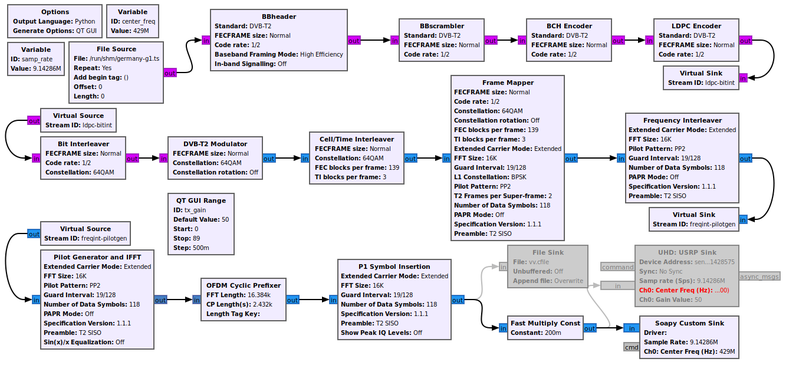Pilot Generator and IFFT: Difference between revisions
Jump to navigation
Jump to search
No edit summary |
(add Example Flowgraph) |
||
| Line 42: | Line 42: | ||
== Example Flowgraph == | == Example Flowgraph == | ||
This flowgraph can be found at [https://raw.githubusercontent.com/gnuradio/gnuradio/master/gr-dtv/examples/germany-g1.grc] | |||
[[File:Germany_g1_fg.png|799px]] | |||
== Source Files == | == Source Files == | ||
Latest revision as of 12:34, 20 December 2021
Adds pilots to T2 frames.
- Input
- Frequency interleaved T2 frame.
- Output
- T2 frame with pilots (in time domain).
Parameters
- Extended Carrier Mode
- Number of carriers
- FFT size
- OFDM IFFT size
- Pilot pattern
- DVB-T2 pilot pattern
- Guard interval
- OFDM ISI guard interval
- Number of data symbols
- Number of OFDM symbols in a T2 frame
- PAPR mode
- PAPR reduction mode
- Specification version
- DVB-T2 specification version
- Preamble
- P1 symbol preamble format
- MISO Group (if Preamble to MISO)
- MISO transmitter ID
- Sin(x)/x equalization
- sin(x)/x DAC equalization
- Bandwidth (if above to on)
- sin(x)/x equalization bandwidth
Example Flowgraph
This flowgraph can be found at [1]
Source Files
- C++ files
- TODO
- Header files
- TODO
- Public header files
- TODO
- Block definition
- TODO
